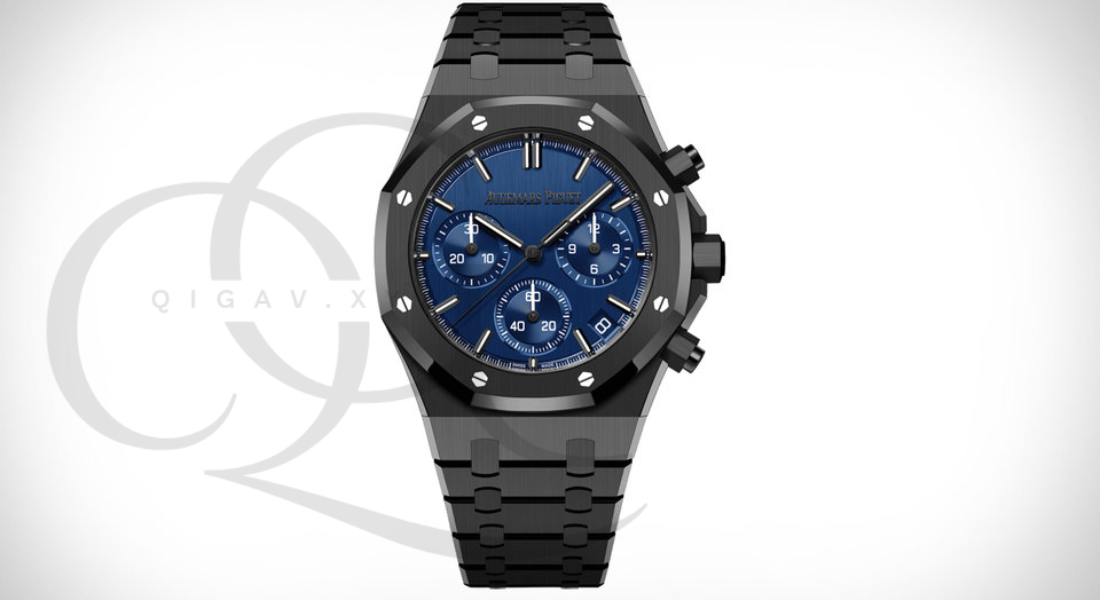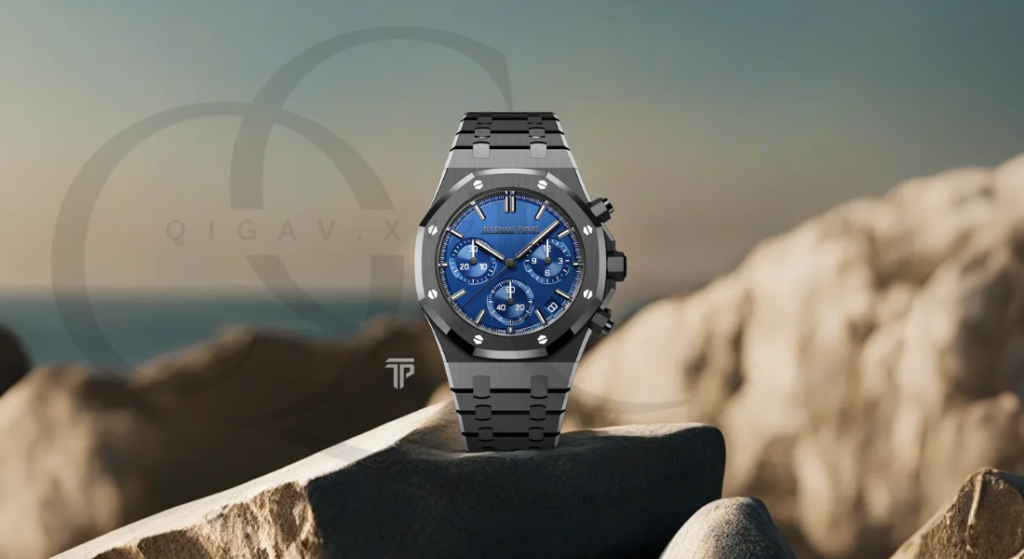Blog
Audemars Piguet Design Aesthetics: A Timeless Blend of Art and Engineering
Audemars Piguet, a name synonymous with luxury, precision, and innovation, has established itself as one of the foremost Swiss watchmakers in the world. Beyond the flawless mechanics of its timepieces, the design aesthetics of Audemars Piguet have become an iconic symbol of refinement and sophistication. The brand’s bold approach to combining traditional craftsmanship with modern, cutting-edge design has earned it a reputation for producing some of the most sought-after watches in the world.
In this article, we delve into the intricate world of Audemars Piguet design aesthetics, examining the brand’s design philosophy, its most iconic collections, and how these timepieces have revolutionized the world of horology with their unique aesthetic and engineering feats.
The Evolution of Audemars Piguet’s Design Aesthetics
Audemars Piguet was founded in 1875 by Jules-Louis Audemars and Edward-Auguste Piguet in Le Brassus, Switzerland. From the outset, the brand was driven by a desire to create exceptional timepieces that were both mechanically flawless and visually captivating. As one of the oldest independent watchmakers in Switzerland, Audemars Piguet’s approach to design has always been innovative, blending traditional Swiss watchmaking techniques with daring and bold aesthetic choices.
The brand’s journey toward defining its design aesthetics can be traced back to the 1970s when it introduced the Royal Oak collection. Designed by Gérald Genta, the Royal Oak was a groundbreaking timepiece in terms of both its engineering and design. The distinctive octagonal bezel, integrated bracelet, and visible screws gave the Royal Oak an industrial yet luxurious appeal, setting a new standard in watchmaking.
Over the years, Audemars Piguet has continued to evolve its design language, experimenting with new materials, shapes, and complications. From the Royal Oak Offshore to the Millenary and Concept collections, each piece showcases the brand’s commitment to creating aesthetically pleasing watches that push the boundaries of design while maintaining their functionality and mechanical excellence.
Signature Elements of Audemars Piguet’s Design Aesthetics
Audemars Piguet design aesthetics can be recognized by several distinct elements that run throughout its collections. These elements not only enhance the beauty of each timepiece but also contribute to its uniqueness in the highly competitive luxury watch market.
1. The Royal Oak: Bold and Iconic
The Royal Oak collection remains the hallmark of Audemars Piguet’s design philosophy. The octagonal bezel, integrated bracelet, and exposed screws make this timepiece a true icon. The design was revolutionary when it was introduced in 1972, challenging traditional ideas of luxury watches by using stainless steel rather than the traditional precious metals like gold or platinum.
The Audemars Piguet Royal Oak is known for its sleek, modern aesthetic combined with a timeless elegance. The dial, often decorated with a unique “Tapisserie” pattern, adds depth and texture to the watch, enhancing its visual appeal. The design was initially met with skepticism, but today, it stands as a symbol of luxury, innovation, and audacity.
2. Integration of Materials: Innovation in Craftsmanship
Audemars Piguet has always been at the forefront of experimenting with new materials in watch design. From titanium and ceramic to carbon fiber and rose gold, the brand has continually sought out new materials to enhance the aesthetics and performance of its timepieces.
For instance, the Royal Oak Offshore collection, which debuted in 1993, pushed the boundaries of material use and design. Featuring larger cases and bolder aesthetics, the Offshore models incorporate a variety of materials like ceramic and rubber, offering a more robust and sporty look without compromising on the refined elegance expected from Audemars Piguet.
3. The Iconic “Tapisserie” Dial
One of the most distinctive features of many Audemars Piguet timepieces, especially those in the Royal Oak collection, is the “Tapisserie” pattern on the dial. This unique, guilloché engraving pattern creates an intricate, textured look that is both visually striking and a testament to the brand’s meticulous attention to detail.
The Tapisserie pattern is not just an aesthetic choice but also a reflection of Audemars Piguet’s commitment to craftsmanship. The process of creating this dial involves using small, delicate tools to create the repeating geometric pattern. This labor-intensive technique ensures that each dial is a true work of art, contributing to the overall Audemars Piguet design aesthetics that set it apart from other luxury watchmakers.
4. Sculptural Forms and Curves
Another hallmark of Audemars Piguet’s design aesthetics is its use of sculptural forms and curved lines. The Millenary collection, for example, is characterized by its elliptical case, which contrasts sharply with the traditional round shapes of most luxury watches. This unusual form gives the Millenary a more contemporary feel while maintaining the elegance that Audemars Piguet is known for.
Similarly, the Concept collection showcases the brand’s ability to push the boundaries of horological design with avant-garde, futuristic shapes and structures. These timepieces often feature exposed movements, skeletonized dials, and unconventional case materials, blurring the lines between art and technology.
How Audemars Piguet’s Design Aesthetics Influence the Luxury Watch Market
The impact of Audemars Piguet design aesthetics on the luxury watch industry cannot be overstated. Over the decades, the brand has consistently challenged traditional norms in watchmaking, leading the charge for more innovative and visually dynamic designs. Audemars Piguet’s bold choices have influenced other luxury watch brands, encouraging them to explore new materials, shapes, and concepts in their own collections.
Audemars Piguet’s commitment to combining functionality with artistry has made it a favorite among watch enthusiasts, collectors, and celebrities alike. The brand’s timepieces are not just instruments for telling time; they are wearable works of art that reflect the individuality and sophistication of their owners.
For example, the Royal Oak collection has become synonymous with luxury and exclusivity, appealing to those who appreciate both the mechanical mastery and the visual impact of the design. The fact that the Royal Oak was initially considered a radical departure from traditional watch design only adds to its mystique, making it even more desirable to collectors.

The Audemars Piguet Collector’s Culture
The design aesthetics of Audemars Piguet have also helped foster a strong culture of collectors. Rare models, limited-edition releases, and unique collaborations have turned Audemars Piguet timepieces into coveted artifacts within the world of horology. The brand’s ability to produce pieces that are both technically innovative and aesthetically pleasing has created a strong demand for its watches, driving a collector’s market that is as much about art and exclusivity as it is about function.
Collectors seek out pieces with distinctive design features, such as the Audemars Piguet Royal Oak Offshore with its bold design and technical innovations or the Millenary for its unorthodox, artistic approach. The unique Audemars Piguet design aesthetics make each timepiece an investment in both beauty and craftsmanship.
The Future of Audemars Piguet’s Design Aesthetics
Looking ahead, Audemars Piguet shows no signs of slowing down when it comes to innovation. The brand is continually refining its design philosophy, incorporating modern technologies while staying true to its roots in traditional Swiss watchmaking. The integration of smartwatch technology into luxury timepieces and the use of sustainable materials are just some of the areas where the brand is exploring new possibilities.
The Audemars Piguet design aesthetics will likely continue to evolve, with future collections pushing the boundaries of what a luxury watch can be. Whether through advancements in material science, movement technology, or design concepts, Audemars Piguet remains committed to offering timepieces that are not only functional but also beautiful and timeless.
Conclusion: The Legacy of Audemars Piguet Design Aesthetics
In conclusion, Audemars Piguet design aesthetics represent a harmonious blend of tradition and innovation, artistry and engineering. The brand’s ability to push the boundaries of design while staying true to its Swiss watchmaking heritage has made it a leader in the luxury watch industry. From the iconic Royal Oak to the avant-garde Concept collection, each timepiece is a testament to the brand’s unwavering commitment to creating watches that are both mechanically sophisticated and visually stunning.
As Audemars Piguet continues to innovate and inspire, its design aesthetics will remain an integral part of what makes the brand synonymous with luxury, prestige, and timeless beauty.

